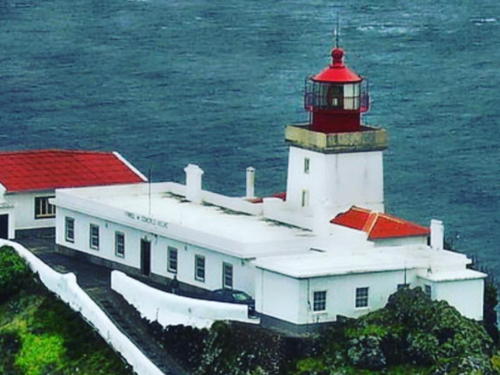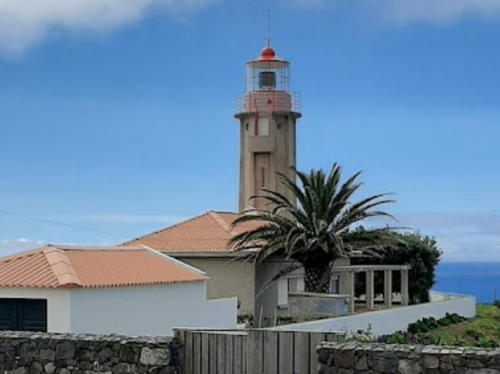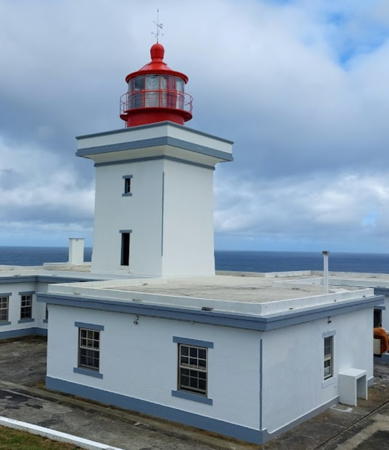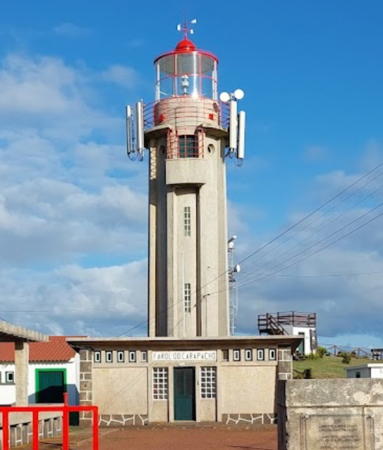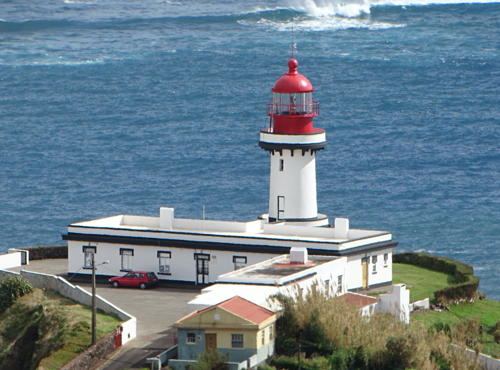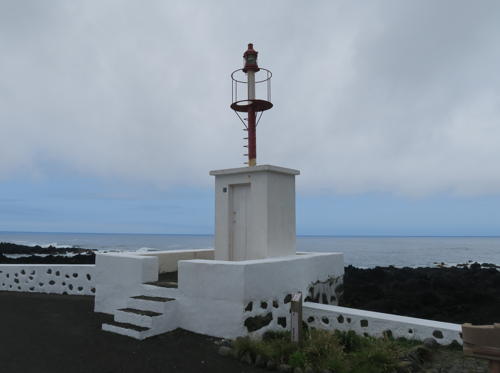Facing the Atlantic Ocean at the southwestern corner of Europe, Portugal (officially the Portuguese Republic, República Portuguesa) has a very distinguished maritime history. Portuguese sailors launched and led the European age of discovery and Portuguese ships have been returning home from the far corners of the globe for about 600 years. It's not surprising that lighthouses have played an important role in Portuguese culture and that they are treasured national monuments today.
The Azores (Açores in Portuguese) are an archipelago of nine volcanic islands in the Atlantic Ocean roughly 1500 km (900 miles) west of Lisbon. The islands fall naturally into three groups: Santa Maria and São Miguel in the east; Faial, Pico, São Jorge, Graciosa, and Terceira in the center; and Corvo and Flores in the west. Corvo and Flores are peaks of the Mid-Atlantic Ridge, which reaches the surface in only a few places. Previously uninhabited, the Azores were discovered by Portuguese explorers in the 1430s and Portuguese settlers began arriving in 1439. Administratively the islands are organized as an autonomous region of Portugal.
The Portuguese word for a lighthouse is farol, plural faróis; a small lightbeacon is often called a farolim. In Portuguese ilha is an island, ilhéu is an islet, cabo is a cape, ponta is a promontory or point of land, rocha is a rock, recife is a reef, baía is a bay, estreito is a strait, rio is a river, and porto is a port or harbor.
Formerly owned by the Navy, the lighthouses in Portugal are now operated by the Lighthouse Directorate (Direção de Faróis), an agency of the National Maritime Authority (Autoridade Marítima Nacional).
ARLHS numbers are from the ARLHS World List of Lights. PT numbers are from the Portuguese Navy list as recorded by Portuguese Wikipedia. Admiralty numbers are from volume D of the Admiralty List of Lights & Fog Signals. U.S. NGA List numbers are from Publication 113.
- General Sources
- Faroís
- Lighthouse information from the Direção de Faróis.
- Les Sentinelles des Mer - Portugal
- Data, historical information and photos posted by Guy Detienne.
- Online List of Lights - Portugal - Azores
- Photos by various photographers posted by Alexander Trabas. The Azores photos are by Rainer Arndt, Werner Seiler, Thomas Philipp, and Capt. Peter Mosselberger ("Capt. Peter").
- Lighthouses in the Azores
- Photos by various photographers available from Wikimedia. These photos are from the Portuguese edition of Wikipedia; see its index of articles Faróis de Portugal - Açores.
- World of Lighthouses - Portugal
- Photos by various photographers available from Lightphotos.net.
- Leuchttürme Portugals auf historischen Postkarten
- Historic postcard images collected by Klaus Huelse.
- GPSNauticalCharts
- Navigational chart for the Azores.
- Navionics Charts
- Navigational chart for the Azores.

Ponta da Barca Light, Graciosa, September 2021
Instagram photo by Visitazores
